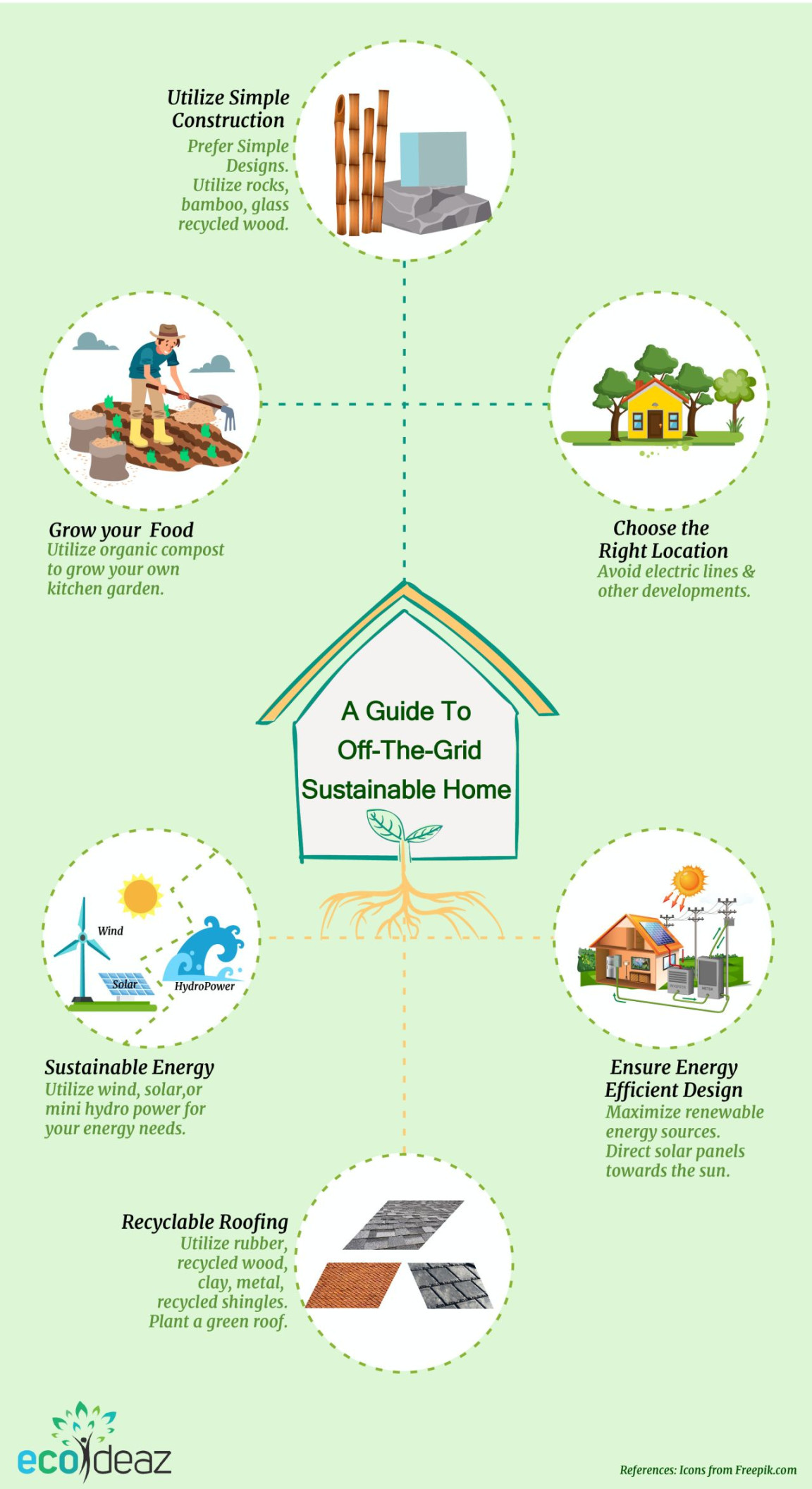Introduction
Living off the grid is a dream for many. It’s a way to reduce your carbon footprint, save money, and gain independence. But it’s also a significant undertaking that requires careful planning and execution. This guide will delve into the essential aspects of going off-grid, from energy generation to home design.
Lighting: Nature’s Best Friend

Natural light is your primary ally when off the grid. Large windows and skylights can dramatically reduce your reliance on artificial lighting. For those inevitable darker hours, LED lights are the most energy-efficient option. Consider solar-powered lights for outdoor areas.
Color Palette: Cool and Calm
Light, neutral colors can make a space feel larger and brighter, crucial in a home without ample electricity. White, beige, and light gray are excellent choices for walls, ceilings, and floors. Dark colors absorb light, so use them sparingly.
Furniture: Multifunctional and Minimalist
Off-grid living often means less space for storage. Opt for multifunctional furniture like storage ottomans, sofa beds, and tables with built-in shelves. Minimalist decor creates an open, airy feel.
Materials: Sustainable and Durable
Prioritize sustainable and durable materials for your off-grid home. Reclaimed wood, bamboo, and cork are eco-friendly options. Consider using low-VOC paints and finishes to improve indoor air quality.
Accessories: Practical and Stylish
Choose accessories that serve a purpose while adding style. Woven baskets can store blankets and firewood. Handcrafted pottery adds warmth and character.
Layout: Maximizing Space and Efficiency
A well-designed layout is essential for off-grid living. Consider an open floor plan to maximize natural light. Place rooms that require the most heat or cooling together to improve energy efficiency.
View: Nature’s Therapy
An inspiring view can significantly enhance your off-grid experience. Orient your home to take advantage of natural light and breathtaking scenery.
Conclusion
Taking your house off the grid is a rewarding journey that requires careful consideration. By focusing on natural light, sustainable materials, and efficient design, you can create a comfortable and eco-friendly home. Remember, it’s about embracing simplicity and self-reliance.
FAQs
1. What are the initial costs of going off the grid?
The initial costs can vary widely depending on your location, desired level of self-sufficiency, and the scale of your project. Expect investments in solar panels, batteries, water storage, and possibly a wind turbine.
2. How can I ensure a reliable water supply off the grid?
Rainwater harvesting is a common method. You can also explore well drilling or purchasing water from a local supplier. Proper filtration and purification are essential.
3. What about heating and cooling an off-grid home?
Passive solar design, insulation, and airtight construction can significantly reduce heating needs. For cooling, consider natural ventilation, fans, and evaporative coolers.
4. How can I manage waste in an off-grid environment?
Composting is essential for organic waste. Recycling programs may be limited, so reducing waste is crucial. Consider incineration for non-recyclable items.
5. What are the legal and permitting requirements for going off the grid?
Regulations vary by location. Research local zoning laws, building codes, and environmental permits. You may need approval for solar panels, well drilling, and septic systems.
Note: While this article provides a general overview, it’s essential to conduct in-depth research based on your specific location and circumstances. Consulting with experts in off-grid living can also be beneficial.
SEO Tip: Incorporate relevant keywords throughout the article, such as “off-grid living,” “sustainable home,” “energy independence,” “solar power,” and “green living.”